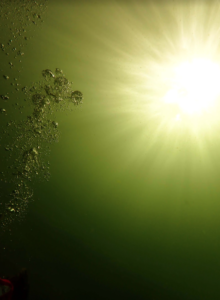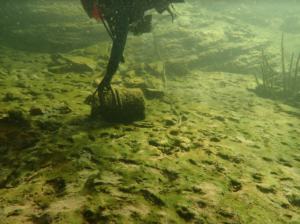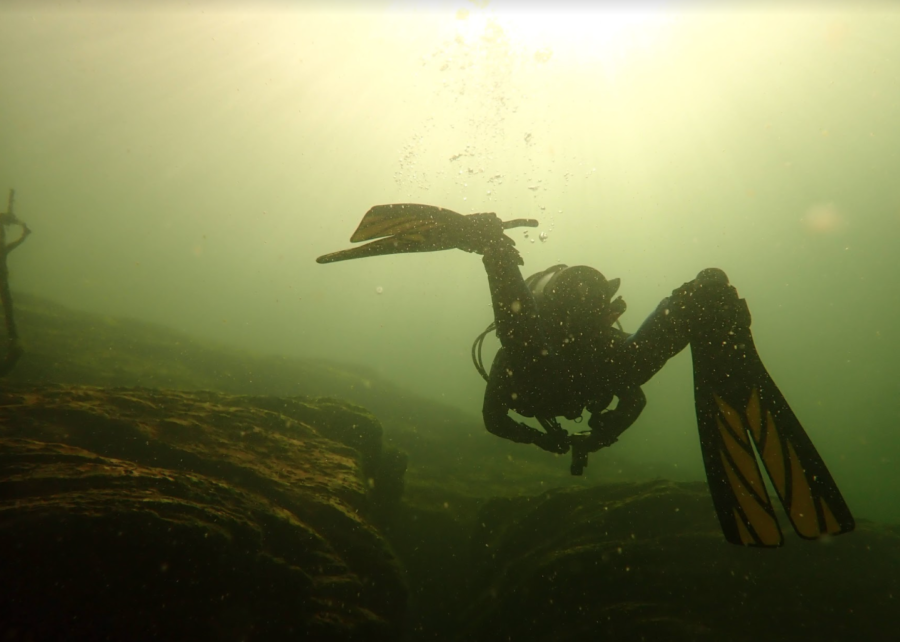Diving in the Desert
In scuba diving, the most important rule is this: do not hold your breath.
Why? Water pressure. Drop 10 meters below the surface and the pressure is twice that at sea level. Double pressure means half the volume. When you ascend, all the air in a body’s available space begins to expand. Imagine a full lung, held tight. Windpipe held rigid like the knot at the top of a balloon. The air inside, doubling — tripling in size.
Never hold your breath. There is not usually much desire to do so anyway. That is, after all, the general appeal of scuba diving: to breathe underwater, although there is much to take your breath away.
Between the 1930s and the 1960s, hundreds of dams were constructed on rivers across the United States. It was called the Big Dam Era. It was the Big Everything Era. The post-war boom. Rivers as plumbing. Technology as agriculture. Water as energy. Valleys as lakes. Cities blooming in the desert. By most metrics, this era began with the Hoover Dam in 1936 and ended with the Glen Canyon Dam, completed in 1966 in a distant desert on the Utah and Arizona state line, on the edge of the Navajo Nation. Both are on the Colorado River, 193 miles apart.
 This past summer, I spent three months living on a beach in Quintana Roo, Mexico, training as a professional Divemaster. Once, a turtle swam straight towards me. I kept still as it slipped under me, its shell almost grazing my stomach. Another time, a Pacific nurse shark bit my friend’s mask off his face. Diving at night, I turned off my light to a world as dark as the deepest space and then waved my hands through bioluminescent stars. I watched the moon rise while I kicked out to a dive site on my back, and watched it hang high above me in the sky an hour later when I kicked back to my home on the beach.
This past summer, I spent three months living on a beach in Quintana Roo, Mexico, training as a professional Divemaster. Once, a turtle swam straight towards me. I kept still as it slipped under me, its shell almost grazing my stomach. Another time, a Pacific nurse shark bit my friend’s mask off his face. Diving at night, I turned off my light to a world as dark as the deepest space and then waved my hands through bioluminescent stars. I watched the moon rise while I kicked out to a dive site on my back, and watched it hang high above me in the sky an hour later when I kicked back to my home on the beach.
I saw other things, too. I remembered lionfish well from earlier days diving in the Philippines. A beautiful redfish with long, poisonous barbs down their back like a mane. In the Philippines, they’re indigenous, but in the Caribbean, they’re invasive, out-competing local species. In the spirit of Leave No Trace, divers don’t touch anything. No flora or fauna, only the sand and the rocks if you must. But we did hunt lionfish. Turned them, these beautiful, unwelcome creatures, into ceviche.
In addition to my diving training, I was working with a biologist to learn how to monitor coral for bleaching and disease. Before, all coral simply seemed miraculous. Now, I can see the tell-tale signs of a dying reef. The muted colors. The bleached white skeletons. The spreading white spots of disease. Many, if not most, reefs are dying from rising ocean temperatures, impending coastal chaos. Above the water, drinking margaritas below palm trees on the white sand of a small Caribbean tourist town, you’d never suspect that corals, sometimes hundreds of years old, are fighting for their life just below the surface of the turquoise water.
The current boundaries of Lake Powell are the result of a compromise. Environmental groups contested the placement of a dam upstream on protected land in Dinosaur National Monument. They won their plea, but in exchange, environmental groups would allow the Glen Canyon Dam project to proceed unopposed, and the dam would be larger than previously suggested. It took almost twenty years for the reservoir to fill. The slow inundation of slot canyon after slot canyon. Lake Powell. One of the most beautiful places I have ever seen. Bright blue water against red rock.
After I finished my Divemaster training in August, I moved to Salt Lake City to start my master’s degree at the University of Utah. “I guess you came here for the diving!” a scuba instructor joked with me in our first meeting. There’s not much, I figured, but there’s something. A lake here and there. Besides, I’m here for the mountains.
Of Glen Canyon Dam, Edward Abbey writes, “once it was different there. I know, for I was one of the lucky few (there could have been thousands more) who saw Glen Canyon before it was drowned. In fact I saw only a part of it but enough to realize that here was an Eden, a portion of the earth’s original paradise. To grasp the nature of the crime that was committed imagine the Taj Mahal or Chartres Cathedral buried in mud until only the spires remain visible. With this difference: those man-made celebrations of human aspiration could conceivably be reconstructed while Glen Canyon was a living thing, irreplaceable, which can never be recovered through any human agency.”
 A few months ago, though, I went to Lake Powell to scuba dive. The Colorado River water that will never reach the sea was greenish, cold, and clear. I dropped down along the wall of an ancient canyon. A place drowned almost half a century before. The only way to be inside the body of Glen Canyon.
A few months ago, though, I went to Lake Powell to scuba dive. The Colorado River water that will never reach the sea was greenish, cold, and clear. I dropped down along the wall of an ancient canyon. A place drowned almost half a century before. The only way to be inside the body of Glen Canyon.
In lakes across the West, I might not look out across a garden of coral in search of an ever-elusive manatee, but if I believe that outdoor recreation can be a powerful lens to see and appreciate environmental issues, perhaps diving into otherwise unseen places can also be a way to consider issues of water in the four corners. Scuba diving does not seem to be a part of the canon of outdoor activities here. Where is the water? Because of that question, though, I think it should be.
In Lake Powell, shivering, my friend and I sifted through sunken beer cans, chips wrappers, just as Edward Abbey prophesized. Then, a tiny stream of bubbles seemed to come out of the rock itself. I swam down and ran my fingers over the spot. A mat of algae on ancient stone. The bubbles stopped. But then I saw another column rising from even deeper, deeper than I could go. Another one. They were everywhere. Little gasps rising to the surface as if the sunken desert was breathing underwater. As if Glen Canyon remembered that to survive underwater, you never hold your breath.




Ed Rossitto
Jul 6, 2023 at 11:22 pm
Interesting read. A Master Scuba diver, hiker, environmentalist, educated, etc.
It would be nice to meet you.
Any adventure reading recommendations?
Ed Rossitto
Rene
Jun 10, 2022 at 3:15 am
Great article, love the articulated wording.